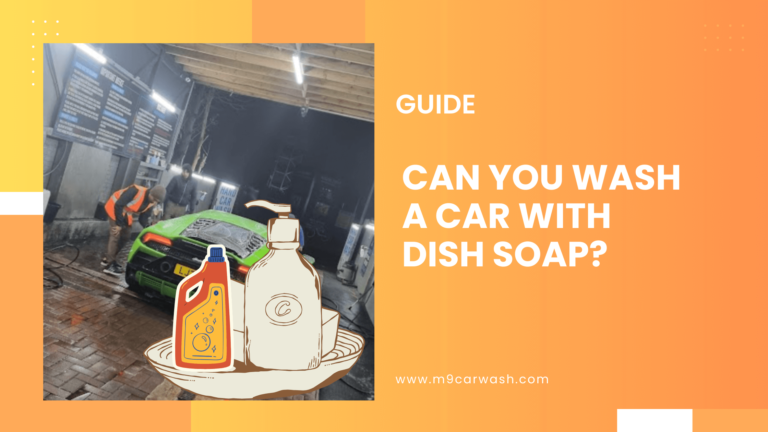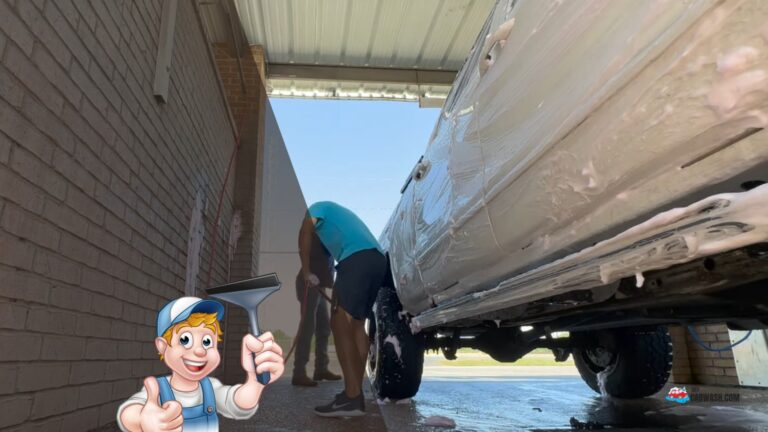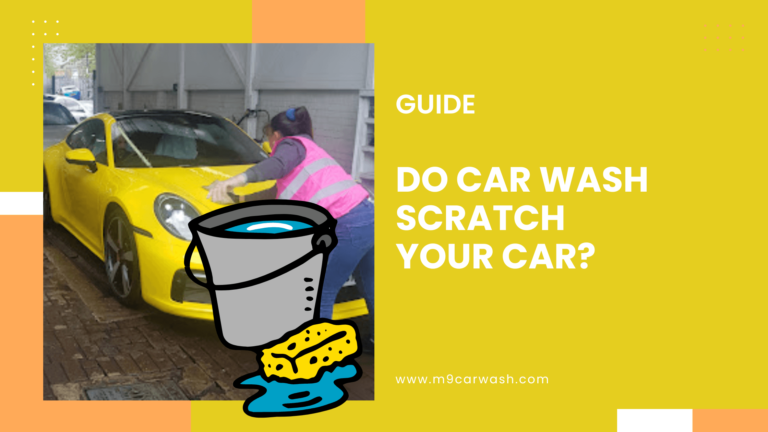To wash car windows inside, follow these steps:
- Prepare Supplies: Use a microfiber cloth, glass cleaner (ammonia-free), and a second dry cloth.
- Spray Cleaner: Lightly spray the cleaner directly onto the microfiber cloth, not the window, to avoid overspray on the interior.
- Wipe Windows: Clean the windows in a circular motion, starting from the top and working your way down to avoid streaks.
- Dry with a Second Cloth: Use a dry microfiber cloth to buff the window, removing any remaining cleaner and ensuring a streak-free finish.
- Check for Streaks: Inspect from different angles and touch up any missed spots.
Avoid using paper towels or abrasive materials, as they can leave lint or scratch the glass.

How to Wash Car Windows Inside: Tutorials
Step 1: Gather Your Window Cleaning Tools
I usually need microfiber cloths, which are great because they won’t leave lint behind.
Next, having an auto glass cleaner is key. I prefer a cleaner that’s safe for all surfaces, including leather, vinyl, and rubber.
Here’s a quick list of what you should gather:
- Microfiber cloths (two or more)
- Auto glass cleaner
- Distilled water (if I mix my own solution)
- Spray bottle for the cleaner
- Trash bag for any debris
I find that using a microfiber cloth is best for cleaning the windshield. It is soft and reduces the risk of scratches. A soft-bristle brush can also help remove dust before cleaning. Additionally, a squeegee can be useful for larger glass areas.
Step 2: Remove the Loose Debris and Dirt
Roll down the windows halfway to access the top edges. Use a clean microfiber cloth and gently wipe away the dust from the glass and surrounding areas.
It’s important to focus on corners where dirt tends to collect.
If there are stubborn particles, I may lightly brush them away rather than pressing hard, which could scratch the glass.
Step 3: Apply the Cleaning Solution
Select and apply the right cleaning solution.
A good cleaner will prevent streaks and ensure a clear view while driving.
I prefer using an ammonia-free cleaner. Ammonia can damage window tints and rubber seals.
I often mix my own solution using 50% vinegar and 50% distilled water. This combination is effective and gentle on glass.
Another option is to use a specialized glass cleaner. Look for products labeled as streak-free to ensure the best results.
Using a spray bottle makes application easy. Just remember to avoid products with harsh chemicals for a safer cleaning experience.
Spraying and Wiping Technique
Before getting started, check the weather. Cleaning in direct sunlight can cause the solution to dry too quickly, leading to streaks.
Once you’re ready, spray the cleaner directly onto the microfiber cloth rather than on the glass. This helps control the amount of solution and reduces drips.
I like to use a light, even pressure while wiping.
- Start from the top of the window and work my way down in straight lines.
- This technique helps keep dirt from spreading.
- For any tough spots, I lightly press the cloth to lift the residue.
- Always finish with a dry part of the cloth to polish the glass for a streak-free finish.
Step 4: Clarity and Shine the Window
Focus on two main steps:
- Buffing to remove streaks and
- Maintaining window clarity.
Buffing to Remove Streaks
This last step reduces streaks that can obstruct your vision while driving. I use a dry microfiber cloth because it is soft and effective.
To buff, I lightly wipe the glass in circular motions.
If the glass still has a haze, I might use a bit of Rain-X.
This product not only enhances clarity but also helps with glare during different driving conditions. Applying it is simple: spray, wipe, and buff away.
Protect Your Windows
Regular cleaning helps prevent buildup that leads to glare and reduces visibility. So make it a routine to clean your windows at least once a month.
In addition to cleaning, I also check my windshield wipers. ‘Worn wipers can create streaks that interfere with clear sight. Replacing them regularly ensures I maintain optimal visibility during rain or snow.
Another tip I follow for protection is to use a glass sealant.
This creates a barrier against dirt and water, making it easier to see while driving. Just a little effort on maintenance goes a long way in keeping my windows clear and safe.
What is the most effective method to clean inside car windows without leaving streaks?
To avoid streaks, I recommend using a glass cleaner designed for automotive use along with a microfiber cloth.
Start by spraying the cleaner on the cloth, not directly on the glass. Wipe in circular motions, and finish with vertical and horizontal strokes for a clear view.
Can vinegar be used to clean the inside of car windows, and if so, how?
Yes, vinegar is a great natural cleaner for car windows.
Mix equal parts water and vinegar in a spray bottle. Spray the solution on a microfiber cloth, then wipe down the windows.
What homemade solutions work best for cleaning car windows internally?
Homemade solutions for cleaning car windows internally can be both effective and eco-friendly.
- Vinegar and Water Solution:
- Mix: 1 part white vinegar to 2 parts distilled water.
- Use: Spray on a microfiber cloth and wipe the windows. Follow with a dry cloth to prevent streaks.
- Rubbing Alcohol and Water Solution:
- Mix: Equal parts rubbing alcohol and distilled water.
- Optional: Add a few drops of vinegar for extra cleaning power.
- Use: Apply with a microfiber cloth, then buff dry.
- Dish Soap and Water Solution:
- Mix: A few drops of mild dish soap in a spray bottle filled with distilled water.
- Use: Spray on the windows, wipe with a microfiber cloth, and follow with a dry cloth.
- Cornstarch and Vinegar Solution:
- Mix: 1 tablespoon cornstarch with 2 cups distilled water and 1/4 cup white vinegar.
- Use: Shake well, apply with a cloth, and buff to a shine.






